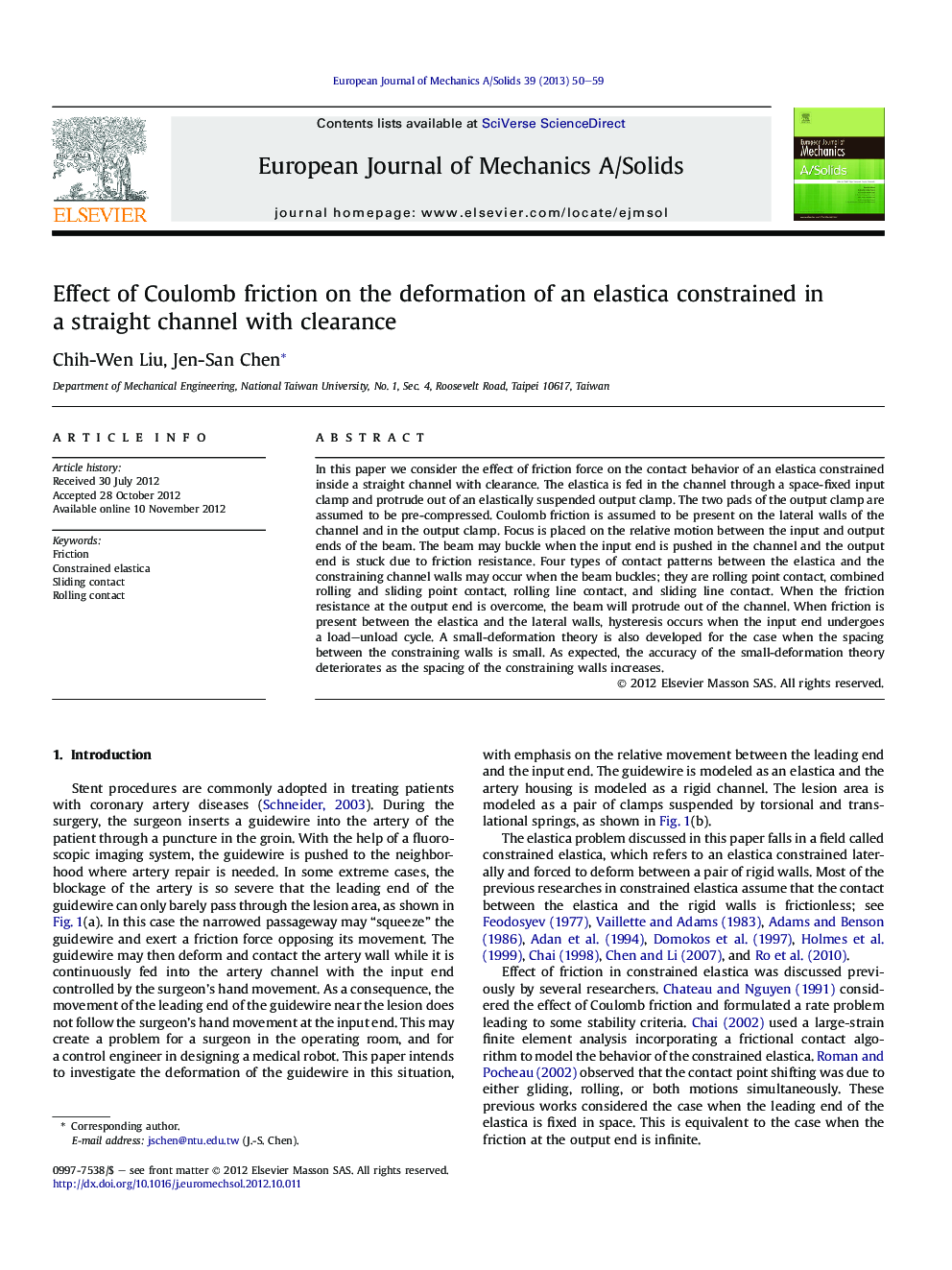| Article ID | Journal | Published Year | Pages | File Type |
|---|---|---|---|---|
| 772396 | European Journal of Mechanics - A/Solids | 2013 | 10 Pages |
In this paper we consider the effect of friction force on the contact behavior of an elastica constrained inside a straight channel with clearance. The elastica is fed in the channel through a space-fixed input clamp and protrude out of an elastically suspended output clamp. The two pads of the output clamp are assumed to be pre-compressed. Coulomb friction is assumed to be present on the lateral walls of the channel and in the output clamp. Focus is placed on the relative motion between the input and output ends of the beam. The beam may buckle when the input end is pushed in the channel and the output end is stuck due to friction resistance. Four types of contact patterns between the elastica and the constraining channel walls may occur when the beam buckles; they are rolling point contact, combined rolling and sliding point contact, rolling line contact, and sliding line contact. When the friction resistance at the output end is overcome, the beam will protrude out of the channel. When friction is present between the elastica and the lateral walls, hysteresis occurs when the input end undergoes a load–unload cycle. A small-deformation theory is also developed for the case when the spacing between the constraining walls is small. As expected, the accuracy of the small-deformation theory deteriorates as the spacing of the constraining walls increases.
► Friction force is present at the output clamp and on the channel walls. ► The two pads of the elastically suspended output clamp are pre-compressed. ► Shooting method is adopted to solve for the elastica deformation. ► Four types of contact patterns may occur. ► The results from elastica model and small-deformation theory are compared.
